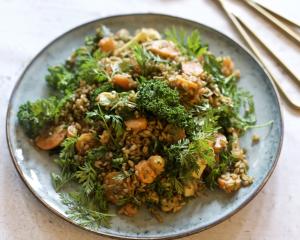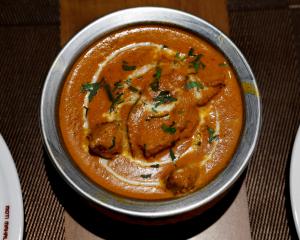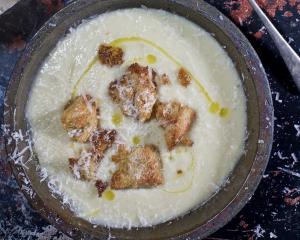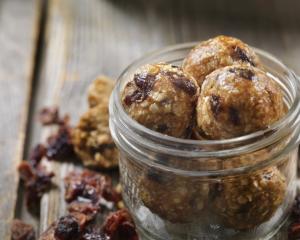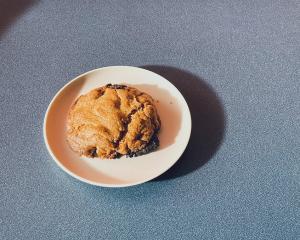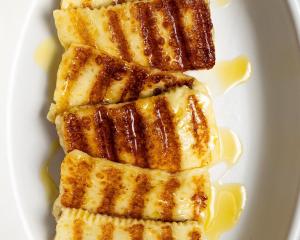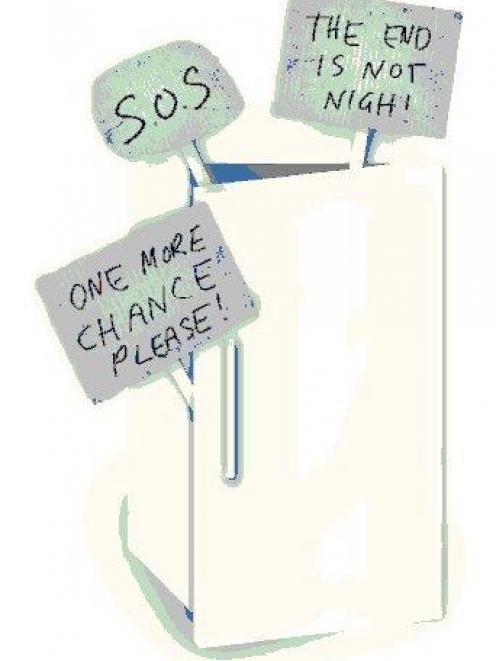
In these days of rising food prices and transport costs, it makes sense to waste as little as possible, not only for economic but also for environmental reasons. In the second of a two-part series, Charmian Smith looks at the ins and outs of best-before dates and finds many ways to use stuff lurking in pantries and fridges.
Start with what's in the pantry. Most pantries, like mine, are full of stuff that might be used occasionally: packets of pasta, tins of tomatoes and coconut milk, jars of olives, tins of anchovies, sardines or salmon, containers half-full of dried lentils, chickpeas and beans, several sorts of rice, spices of all types, as well as exotic stuff bought ages ago for a special dish and still sitting there, such as Bombay duck, lotus seeds, and dried galingal.
Using up some of this stuff makes sense. Plan a few meals to do so.
• Make a shopping list. When you go to the market or supermarket, take a list of what you think you will need for the week, but don't be too rigid.
There will be specials and things that look particularly good, but don't be enticed by supermarket specials unless you will actually use them.
• Look in the fridge. A few vegetables lingering at the bottom of the crisper are a bonus. Make a trusty frittata, use them in a stir-fry, a risotto, a soup, or a vegetable stew of any ethnic persuasion you like.
• Making a stock is a good way to use up leftovers, especially ones you wouldn't actually eat, such as the outside leaves and tops of leeks, celery leaves, a chicken carcass, clean vegetable peelings and onion skins. Put all the ingredients in a large pot, cover with water, bring to the boil and simmer for an hour or so. Include an onion chopped into quarters (leave the skin on), perhaps a roughly chopped carrot and a few peppercorns. Strain the stock, put the spent vegetables in the compost and throw out the carcass, if using, or put it in the bokashi bucket. Allow to cool, then skim off the fat. The stock can be used immediately in soup or risotto, or for adding flavour to a stew or casserole, or it can be frozen for later use.
• Most vegetables, such as potatoes, carrots, parsnips and kumara, don't need to be peeled; just scrub them. There are many vitamins and minerals in and just under the skins that would otherwise be wasted. The stems of broccoli and cauliflower are crisper than the florets and can be chopped and eaten raw or cooked; peel them if they have a tough outer layer.
Tender cauliflower leaves and young beetroot leaves make good eating too.
Using cooked leftovers
With a little thought and a few simple additions, yesterday's leftovers can feed the family today.
• One of the simplest ways to save time cooking is to cook twice as much as you need and reheat the leftovers the following day. This works particularly well with soups, stews, casseroles, curries and suchlike, especially as they usually taste better after the flavours meld. Serve with different vegetables each day if you want a change.
Frittata, or quiche, is good eaten cold the next day, as are many pasta and rice dishes. Take some to work to save you buying lunch.
Freezing leftovers such as soup or stews is another option, providing a quick meal on a busy night weeks later.
If you have only a few leftovers, they can easily be turned into a topping for rice, pasta or couscous. Add extra flavourings if you wish, such as harissa, tahini, pesto, chutney, soy, hosin or sweet chilli sauce, depending on what flavours you are starting with.
A risotto will make a little bit of something, such as a lone sausage, or a small amount of meat or vegetables, go a long way, as will fried rice.
A stir-fry or fried rice is a quick way to use up leftover vegetables or meat, perhaps with a little ginger, garlic and soy or hoisin sauce for extra flavour. It's easy to add a few other vegetables, greens or an egg, if you need to make it go further.
• A pizza is another great way to use up a small amount of fresh or cooked vegetables or meat, or a few odd veges lurking at the back of the crisper drawer.
Make a quick tomato sauce from a chopped onion and clove of garlic sauteed in a little oil and then cooked with a can of tomatoes until reduced a little.
Stir in a dollop of tomato paste and it's ready to spread on a base, either made in a breadmaker or frozen, or use leftover pita or naan, a tortilla, pastry, a scone mix or a thick slice of stale bread. Top with thinly sliced vegetables and grated cheese and cook in a hot oven for 10-15 minutes or so and it's almost quicker than going out for a takeaway. This sauce is also a good base for a pasta topping.
• Leftover roast vegetables are common in my kitchen. They are good simply reheated, but they can also be the basis of a roast vegetable salad or soup, the filling for a quick frittata, fritters or omelette, or, with a little sour cream or cream cheese and some chutney or relish, the filling for a wrap.
• Many traditional dishes are based on leftovers. One of the most universal is bubble and squeak, also called fry-up, stovies in Scotland, colcannon in Ireland, and hash in the United States. It's simply potato, cabbage and maybe other cooked vegetables, mashed and fried. You can include chopped cooked meat, fried onions and cheese if you like.
Cottage or shepherd's pie can be made from cooked, finely chopped meat instead of fresh mince, topped with leftover mashed potato. A mashed potato topping also helps stretch leftover bolognaise, stew or casserole. No mashed potato?
Try other sorts of mash such as carrot and parsnip, or a scone mix or a piece of ready-rolled pastry.
• Many old recipes make use of stale bread. Today we can freeze it and toast it (try a mousetrap or crostini), but stale bread also makes delicious bread-and-butter pudding, breadcrumbs for a gratin topping or, mixed with herbs, a coating for meat or fish, crispy croutons to add crunch to soup or salad, and, another of my favourites, in Mediterranean salads like fattoush or panzanella.
You can either crisp the torn-up stale bread in the oven or toaster, or toss cubes in hot oil or bake them to make croutons, or you can soak the bread in water and squeeze it to soften it if you don't want the crunch. Mix your salad ingredients - raw or cooked vegetables, cold meat, ham, crispy bacon, tinned fish, cubes of cheese, toasted nuts or whatever you have - with the bread and toss with your favourite dressing.
Using leftovers safely
• Standard food hygiene rules apply: clean, cook, cover, cool.
• Make sure everything's clean.
• Cool freshly cooked food until it stops steaming. Shallow containers allow food to cool more quickly than deeper ones.
• Cover the food and put it in the fridge.
• Either freeze it or eat it within a couple of days. If you reheat it, make sure it is steaming hot throughout (75degC).
The full story
If you missed the first part of this series, published last week, go to Lifestyle/Food & Wine then "Waste ... not," and "If there is 'nothing' in the fridge - look again."


